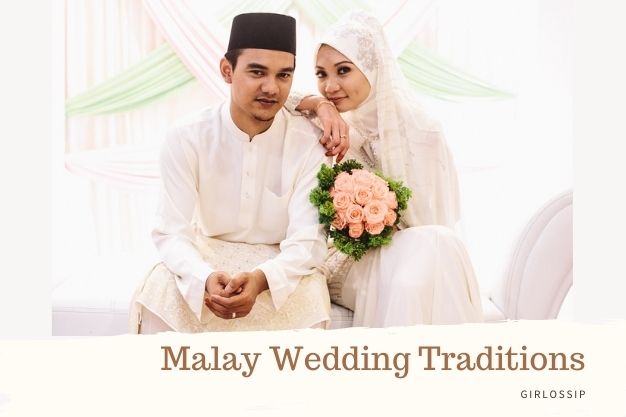
Welcome to a Malay Wedding!
The idea of wedding planning in itself is overwhelming, and the expectations that come with it are even more stressful when traditional culture and values come into the picture. Malay weddings are renowned for their rich culture and religious beliefs.
Weddings are joyful moments and, irrespective of race or religion, it’s a time for traditions. Traditional Islamic marriage rites celebrating the Malay culture make up a Malay wedding, like the many meaningful and age-old traditions in Chinese weddings. You might find some of these practises similar to Chinese wedding traditions or those of other religions if you’re familiar with Malay weddings, while some are unique to Malay weddings. If you are unfamiliar, learn about some of the usual practises. Despite having evolved over the years, there are still some basic traditions and rituals that remain until this date, adopted from both Malay and Muslim culture.
Malay weddings appear to the uninitiated as extravagant festivities comprising numerous activities that seem to go on forever, rooted in traditions originating from a variety of rich cultural sources and, in short, a complete cultural enigma, with a confounding collection of rules and regulations. Well, no-more-enigma; we’re here to give you a little step-by-step insight into what’s going on at a Malay wedding.
Pre-wedding customs
Merisik
Although “spying” is the direct translation from Malay to English, this stage is better known as the man’s “viewing” of the woman, typically carried out by the parents or relatives of the young man to explore her background, interact with her family, and gauge the woman’s availability.
Meminang
Now is the time for proposal; date and time for the commitment are established once the parties are committed to each other and the exact amount is agreed for the duit hantaran or dowry tray-gifts.
Adat bertunang
This is the ceremony for the engagement. Typically, the aim of this event is to put a ring on the finger of the bride-to-be, usually done by female representatives of the groom (either the mother or a sister) in the setting of a big party, and the tray-gifts are exchanged, making the commitment official.
Adat berinai
Usually, this step occurs three days or so before the wedding; the bride’s hands and feet are adorned with henna. In Hinduism and Buddhism, the roots of this theory are meant to ward off bad luck and deceptive spirits, as well as to show that the couple is engaged.
The wedding customs
The wedding is divided into two segments; the Akad nikah and the majlis bersanding.
Akad nikah
The Akad Nikah, also known as the solemnization ceremony, includes a Wali for a Malay Muslim couple, usually the father of the bride, or if he is no longer around, the next male in the power of the family, – which means her brother, paternal grandfather or paternal uncle in that order, to give the bride away. The ritual also requires two Saksi-witnesses to validate the ceremony-and a Kadi, an official, who is educated in Islamic laws.
More modern couples may choose to skip out on the rest of the stages and just do the Akad nikah as marriage is the only really necessary step. The ceremony takes place either at the home of the bride’s parents or a local mosque and is only seen in front of family and close friends.
Akad Nikah signifies the beginning of the marriage, unlike the Majlis Persandingan, and is attended only by the couple and their family and closest relatives.
Majlis bersanding
This is a much larger party held for extended family, friends and acquaintances, better known as the wedding reception. It can take place in the afternoon, which is a more casual event without a fixed itinerary, or in the evening, which is more formal and may include a multiple course dinner and fewer guests.
The guests give their blessings in a practice derived from Hindu culture by throwing a combination of Bunga Rampai (finely cut aromatic Pandan leaf, sprayed with perfume) liquid rice flour and rose water over the pair, which are spread out on a tray. Bunga telur, the sign of fertility, is given to the guests who bless the couple (these are usually scented soaps, candy or chocolates at modern weddings).
Customs
- Some may choose to host Bersanding events at the bride’s house and then the groom’s house, as well as larger receptions for extended family and friends in hotels, restaurants or community centres.
- The newlyweds are treated as king and queen for their big day during the Bersanding ceremony.
- Money has been the classic gift of choice at a Malay wedding and should be transferred in an enclosed packet to the parents of the bride or groom at the end of the ceremony.
What to wear?
Conservative, modest attire that is not provocative and headscarves for women are the dress code for the wedding proper. Traditional Malay clothes (baju kurung / kebaya for women; baju melayu for men) are the easiest choice.
Keep the modest dress code in the case of reception, but remember that you do not have to be in traditional dress-wear whatever you like.
What else?
They have a pre-wedding course!
Yes, they do.
This marriage training course prepares the couple and builds a solid base for their married life. Although participation has not been mandatory since 2015, couples are strongly encouraged to go through the marriage preparation course.
The preparation course for marriage is a two-day course offered by mosques and Islamic organisations. Couples will be briefed on the fundamental knowledge of married life and taught during the course how to address problems such as money management, wedding budget and in-law relationship management as husband and wife. Couples will be presented with a certificate at the end of the course to demonstrate that they have completed the course successfully.
Way to go!
Happy Malay Wedding!